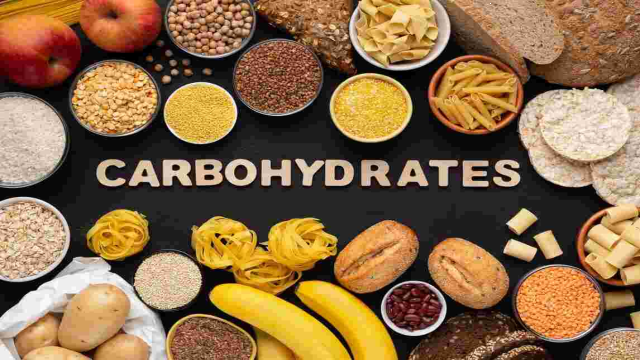Carbohydrates
Carbohydrates are essential organic compounds that serve as a primary source of energy for living organisms, including humans. They are made up of carbon, hydrogen, and oxygen atoms and exist in various forms.
Composition of Carbohydrates
- Elements: Carbohydrates are compounds of Carbon, Hydrogen and Oxygen and are known as Hydrates of Carbon. The common formula of all Carbohydrates is Cm(H2O)n, where m and n may be different values. However, Deoxyribose Sugar of DNA is an exception and its molecular formula is C5H10O4. Sugars, starch and cellulose are some of the common examples of Carbohydrates.
- Monomers: The basic building blocks of carbohydrates are simple sugars or monosaccharides. Monosaccharides are single sugar molecules and cannot be further hydrolyzed into smaller sugars.
- Polymers: Carbohydrates can form complex structures through the polymerization of monosaccharides. Disaccharides consist of two monosaccharide units, while polysaccharides are composed of multiple monosaccharide units.
Types of Carbohydrates
Carbohydrates are classified in several ways. Monosaccharides (single unit sugars) are grouped by the number of carbon molecules they contain: For example, triose has three pentose has five and hexose has six. Carbohydrates are also classified by their overall length (monosaccharide, disaccharide or polysaccharide) or function.
- Monosaccharides: Monosaccharides are simple carbohydrates molecules that cannot be broken down into smaller molecules of other carbohydrates. Glucose, fructose and galactose are examples of Monosaccharides. They are the primary source of energy for cells and are easily absorbed in the bloodstream.
- Disaccharides: Disaccharides are carbohydrates made up of two monosaccharides and which are missing one molecule of water (dehydration). Such bonds are called glycosidic bonds. Examples include sucrose (glucose + fructose), lactose (glucose + galactose), and maltose (glucose + glucose). Table sugar Sucrose is a disaccharide made of one molecule of glucose and one molecule of fructose. Maltose is also a disaccharide that consists of two glucose molecules. Lactose or milk sugar is another disaccharide made of one molecule of galactose and one molecule of glucose.
- Oligosaccharides: Oligosaccharides are carbohydrates made of maximum of 10 Monosaccharides.
- Polysaccharides: Polysaccharides are large carbohydrate molecules composed of long chains of monosaccharides. They serve as storage forms of energy and structural components in organisms. Common examples of polysaccharides are cellulose, starch, glycogen, chitin etc. Polysaccharides do structural and storage functions. Storage polysaccharides (glycogen and starch) store energy while structural polysaccharides (cellulose and chitin) provide support for organisms without a bony skeleton
Examples and Uses of Carbohydrates
- Glucose: Glucose is a monosaccharide and the primary source of energy for cellular processes. It is readily available in fruits, vegetables, and grains and serves as fuel for the body.
- Sucrose: Sucrose is a disaccharide composed of glucose and fructose. It is commonly known as table sugar and is used as a sweetener in various food and beverage products.
- Starch: Starch is a polysaccharide found in plants, serving as a storage form of energy. It is a major component of human diets, present in foods such as rice, potatoes, and grains.
- Glycogen: Glycogen is a polysaccharide found in animals, including humans. It is stored in the liver and muscles and serves as a readily available source of energy during physical activity.
- Cellulose: Cellulose is a complex polysaccharide and a major component of plant cell walls. It provides structural support to plant cells and is an essential dietary fiber for humans.
Importance of Carbohydrates
- Energy Source: Carbohydrates are the primary energy source for cells and tissues. Glucose, in particular, is crucial for cellular respiration, which produces ATP (adenosine triphosphate), the energy currency of cells.
- Dietary Fiber: Some carbohydrates, like cellulose and certain non-digestible polysaccharides, are dietary fibers that aid in digestion and promote gut health.
- Storage: Plants store excess energy in the form of starch, while animals store it as glycogen. These storage forms ensure a continuous supply of energy during times of fasting or increased energy demands.
- Structural Support: Carbohydrates like cellulose provide structural support to plant cell walls, contributing to the stability and rigidity of plant tissues.
Carbohydrates play a fundamental role in biological systems by providing energy, supporting structural integrity, and contributing to overall health and nutrition. Their diverse forms and functions make them essential components of a balanced diet and the proper functioning of living organisms.


